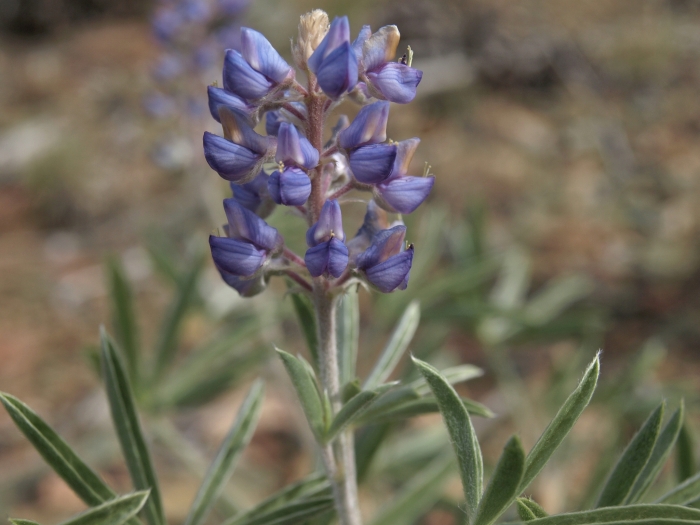Palmer’s Lupine
(Lupinus palmeri)
Palmer’s Lupine (Lupinus palmeri)
/
/

Jim Morefield
CC BY 4.0
Image By:
Jim Morefield
Recorded By:
Copyright:
CC BY 4.0
Copyright Notice:
Photo by: Jim Morefield | License Type: CC BY 4.0 | License URL: http://creativecommons.org/licenses/by/4.0/ | Rights Holder: Jim Morefield | Publisher: iNaturalist | Date Created: 2016-06-18T16:42:34-07:00 |
















Estimated Native Range
Summary
Lupinus palmeri, commonly known as Palmer’s Lupine or bluebonnet lupine, is a perennial herb that can be found in the chaparral and woodlands of southwestern North America, particularly in California. This species exhibits a variable growth habit, typically standing erect with a height range from 10 centimeters (3.9 inches) to 1.5 meters (4.9 feet). Its foliage may vary from silvery-hairy to nearly hairless, depending on the specific environmental conditions. The inflorescence is a striking feature, with many flowers that can be arranged in whorls. Each flower measures between 5 millimeters (0.20 inches) and 14 millimeters (0.55 inches) in length, displaying hues of purple, blue, or occasionally whitish tones. Palmer’s Lupine is particularly noted for its vibrant springtime blooms.
Palmer’s Lupine is valued for its ability to attract pollinators such as butterflies, birds, and hummingbirds, making it a beneficial addition to ecological gardens and naturalized areas. It thrives in full sun and requires medium amounts of water, preferring well-drained soils. While it is not commonly used in formal garden settings, its natural beauty and wildlife benefits make it a suitable choice for wildflower meadows and restoration projects. Gardeners should note that lupines can be susceptible to fungal diseases, especially in poorly drained soils. Additionally, the plant’s seeds and other parts contain alkaloids and can be toxic if ingested.CC BY-SA 4.0
Palmer’s Lupine is valued for its ability to attract pollinators such as butterflies, birds, and hummingbirds, making it a beneficial addition to ecological gardens and naturalized areas. It thrives in full sun and requires medium amounts of water, preferring well-drained soils. While it is not commonly used in formal garden settings, its natural beauty and wildlife benefits make it a suitable choice for wildflower meadows and restoration projects. Gardeners should note that lupines can be susceptible to fungal diseases, especially in poorly drained soils. Additionally, the plant’s seeds and other parts contain alkaloids and can be toxic if ingested.CC BY-SA 4.0
Plant Description
- Plant Type: Herb
- Height: 1-2 feet
- Width: 0.5-1.5 feet
- Growth Rate: Moderate
- Flower Color: Blue, Purple
- Flowering Season: Summer, Fall
- Leaf Retention: Deciduous
Growth Requirements
- Sun: Full Sun
- Water: Medium
- Drainage: Fast
Common Uses
Bee Garden, Bird Garden, Butterfly Garden, Deer Resistant, Fragrant, Hummingbird Garden, Low Maintenance, Rabbit Resistant, Showy Flowers
Natural Habitat
Chaparral and woodlands of southwestern North America, particularly in California
Other Names
Common Names: Palmer’s Silvery Lupine
Scientific Names: , Lupinus palmeri, Lupinus argenteus var. palmeri, Lupinus candidissimus, Lupinus clokeyanus, Lupinus fontis-batchelderi, Lupinus jaegeranus, Lupinus junipericola, Lupinus keckianus, Lupinus portae-westgardiae
GBIF Accepted Name: Lupinus argenteus var. palmeri (S.Watson) Barneby